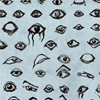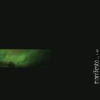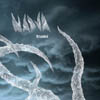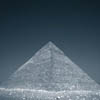- Administrator
- Albums and Singles
 Although his reputation as the “screaming philosopher” precedes him, this vastly insufficient nickname does nothing to convey the power and skill of Tomokawa’s singing and songwriting. While the gasping, almost convulsive delivery of some of his lines does of course lend credence to this moniker, everyone seems to overlook his earthy, troubadour voice that carries most of the songs. Backed by a band who seem comfortable playing in a traditional Spanish style (with an Eastern European twist), this album shows Tomokawa at an ever higher peak than usual.
Although his reputation as the “screaming philosopher” precedes him, this vastly insufficient nickname does nothing to convey the power and skill of Tomokawa’s singing and songwriting. While the gasping, almost convulsive delivery of some of his lines does of course lend credence to this moniker, everyone seems to overlook his earthy, troubadour voice that carries most of the songs. Backed by a band who seem comfortable playing in a traditional Spanish style (with an Eastern European twist), this album shows Tomokawa at an ever higher peak than usual.
Tomokawa is no stranger to vastly moving songwriting (even if only partially appreciated through written translations) but Blue Water, Red Water is a whirlwind of stirring music and passionately sung lyrics. The tone is set from the instant the album starts with “Once I Stared Afar;” the dense metaphysical lyrics (thankfully translated by the ubiquitous Alan Cummings) are allowed to soar on delicately compassionate music. Taro Kanai’s returning role as guitarist for Tomokawa is most welcome, his almost flamenco style reinforcing Tomokawa’s image as the troubadour of the east.
Ayumi Matsui’s sweet violin and Cinorama’s Hiromichi Sakamoto’s delicate cello add an even more melancholic edge to Tomokawa’s already moody compositions. The strings on “Kara Bran” swing back and forth across a lilting piano and tuba motif and Tomokawa’s vocals are at their most ragged. The song climaxes with an exquisite flourish of violin and cello that pull the listener in like a whirlpool. This song is worth the purchase of Blue Water, Red Water alone (but thankfully the rest of the album compares favourably to it).
Few and far between are songwriters who, in their fourth decade of writing and performing, are as resonant now as they have ever been and it is needless to say that Tomokawa is one such artist. Unfortunately, few and far between are affordable Tomokawa releases on these shores so to find this available at a normal price is most welcome. Add to the fact that this is one of the strongest albums of his I have encountered (and indeed a possible contender for album of the year in my book) and I am a very happy bunny.
samples:
Read More
- Administrator
- Albums and Singles
title: Temper
catalog#: krank123
formats available: 2LP / CD
release date: october 14, 2008
content: Temper is the second album under his Benoit Pioulard nom de guerre. Composed throughout a year that involved graduation from university and a cross-continental relocation, its 16 tracks arose in specific periods of intense creative energy.
Assembling various analog sources on basic software at home, Pioulard has honed his craft into a form that suggests something far grander. With soft-edged vocals and a broad palette of instruments that lately includes harmonium and cello, he constructs diverse arrangements that skirt the borders of pop with beautiful, detailed atmospheres. The scope and sonic narratives of songs like “A Woolgathering Exodus” and “Golden Grin” exhibit new degrees of musicality, while the weightlessness of “Brown Bess” or “Sweep Generator” reflects the unrestrained context in which the record was produced.
It is no coincidence that the word ‘temper’ has more than 20 definitions related to basic existential aspects like emotion, behavior, and music; it offers many dimensions but also reveals how scrawny language can be in its attempt to name the abstract. On Temper, Pioulard endeavors to make sense of things in a tumultuous time, inspired by everything from medieval astrology to the poems of T.S. Eliot and the films of the Italian neo-realists. Fully aware of the mission’s vanity, he is nevertheless consumed by its path.
context: Benoit Pioulard's first album was the widely acclaimed Precis which was listed on literally dozens of 2006 year end best of lists.
The double LP vinyl version of this release also includes the Precis album, issued on vinyl for the first time.
track listing: 1. Ragged Tint 2. Ahn 3. Sweep Generator 4. Golden Grin 5. The Loom Pedal
6. Ardoise 7. Physic 8. Modèle d'Éclat 9. Idyll 10. Brown Bess 11. Cycle Disparaissant
12. A Woolgathering Exodus 13. Détruisons Tout 14. Loupe 15. Tapyre 16. Hesperus
press quotes for Periphery:
"Précis is a spectacular, fully realized debut. …a breathtaking sonic landscape… It sounds like nothing else you’ll hear this year. Rating: A" Stylus
"A debut of this caliber is rare... Not to be missed. 9/10" Lost at Sea
"Pioulard has a masterful hold on pop music with a subversive intent to darken and beautify its borders. 9/10" Filter
"Gorgeous... Précis is a masterful necropolis, intimidating to enter and beautifully crusted with age." Cokemachineglow
Read More
- Administrator
- Albums and Singles
 Charlie Looker has issued every rock band in existence a very serious challenge: write music as inventive and natural as the stuff on Secular Works or get the hell off the stage. I'm certain that this album spells the end for nearly every math-rock band in existence.
Charlie Looker has issued every rock band in existence a very serious challenge: write music as inventive and natural as the stuff on Secular Works or get the hell off the stage. I'm certain that this album spells the end for nearly every math-rock band in existence.
Planaria
Secular Works has so much going for it that picking a place to begin talking about it is pretty difficult. The vocalist and lead-man, Charlie Looker, often enjoys singing in a style that's inspired by plainchant and the band is accomplished enough to oscillate between concussive, heavy metal assaults and delicate, nearly meditative clouds of psychedelia. These contrasts are often forced together on the record, which might at first sound like a disconcerting thing. Plenty of bands enjoy contrasting styles; they bang dissimilar objects together and play in the ensuing explosion with a kind of childish, perhaps immature glee. Destruction is fun and tearing genres apart might be intellectually stimulating, but real talent requires an architect capable of putting all the pieces back together in a pleasing way. Extra Life does just that; with all their various influences and technical abilities the band uses unusual and difficult music to make something that rides the line between the alien and the familiar.
Take for an example the opening song, "Blackmail Blues;" it begins with a strange, almost arhythmic strumming of the electric guitar, which is accented and made perhaps more unstable by an absolutely thunderous assault of percussion. The play of rhythms and melodies in the first two minutes of the song are intense, layered, and complex all by themselves. But, then Looker begins to sing, enunciating the same syllables over multiple notes, utilizing his strangely monolithic voice to rise above the music, and refusing to sing anything that sounds like what a modern rock band or metal band might employ. There's no screaming, no whining, and absolutely no mumbling. I imagine countless bands wish they had the dynamic range exhibited on this song alone, but what keeps the song interesting over its nearly nine-minute duration isn't all the unique, little parts or the way they contrast against each other. No, the real pull of "Blackmail Blues" is how well all these various parts come together and form an intriguing whole. The rhythmic abnormalities and incredibly difficult shifts in tempo and time signature all work for the good of the song, not for themselves. At the end there's an amazing section where the drummer seems to read Looker's mind and he manages to imitate Looker's percussive style of singing note for note over a nearly unpredictable spattering of sixteenth notes from hell. If I were the drummer in that band I'd probably have smacked Looker for even suggesting such a ridiculous and difficult task, but Extra Life pulls it out of their hat with such fluidity and class that it manages to lend an explosive end to an already fiery song.
From there things become more intense, despite becoming generally quieter. "I Don't Feel That Way" is another musical and technical accomplishment that'll make anyone interested in rhythmic tension twitch with frustration. Go ahead, try counting out the bass-heavy convulsions and snare snaps that seem to spill out of nowhere at a moment's notice: I'm convinced some form of arcane magic is responsible for keeping this band in time because no natural explanation is satisfactory. Two, ten-minute epics dominate the record, however, and their stark beauty is their best feature. Both "I'll Burn" and "This Time" radiate with an uncomfortable aura that shines as much as it blackens and confuses. The latter is aglow with barely-there violins, wooden blocks, gently snapped strings, and uneasy lyrics that speak of some long-planned and slow-boiling violence. The noir-ish qualities of these two songs provide much-needed relief from the vigorous and sometimes noisy elements that are featured on the rest of the record.
Secular Life is the kind of record that will catch a lot of people off guard; it has to seep into the skin over the long run, but the impressive punches and immediate gratification is also supplies should be enough to draw most people into its gravity. Technically, it's the most accomplished record I've heard this year. On the whole, it's one of the most impressively adventurous and satisfying records in my collection; one of those rare blends of experimentation and quality song-writing that succeeds on every conceivable level.
samples:
Read More
- Administrator
- Albums and Singles
 Techno godfather Juan Atkins' finest productions lie more than a decade behind him, his post-millennial output utterly unmemorable by contrast. When Timbaland and Missy Elliott appropriated wholesale and slightly repurposed Cybotron's "Clear" a few years back for the "Lose Control" single, the succeeding and lingering stench of musical necrophilia made the Detroit legend's faded glory all the more uncomfortably evident. Moderately diverse and unsurprisingly enjoyable given the contributors, this remix collection dusts off yet another Atkins oldie for another nine rounds.
Techno godfather Juan Atkins' finest productions lie more than a decade behind him, his post-millennial output utterly unmemorable by contrast. When Timbaland and Missy Elliott appropriated wholesale and slightly repurposed Cybotron's "Clear" a few years back for the "Lose Control" single, the succeeding and lingering stench of musical necrophilia made the Detroit legend's faded glory all the more uncomfortably evident. Moderately diverse and unsurprisingly enjoyable given the contributors, this remix collection dusts off yet another Atkins oldie for another nine rounds.
Issued first in 1995 under the Model 500 moniker, "Starlight" was packaged with a Moritz von Oswald version on the flipside, making it a sought-after gem today for Basic Channel obsessives. Revived and reproduced here, it serves as the starting point for a series of mixes—most of which previously released on vinyl—that generally exploit the assets of the originals. Fortunately, this rediscovery effort was spearheaded by the Echospace Detroit imprint, one of the hottest outlets of deep techno thanks largely to the amazing in-house duo of Rod Modell and Stephen Hitchell who incestuously pervade this compilation with a handful of solo and shared aliases. As DeepChord, Modell presents a characteristically spacey and lengthy mix adorned with blissed-out patches and warm pads cluttered by bits of aural detritus. Collaborating with Hitchell, he features on two Echospace versions, the first of these primed for the dancefloor. Scaling back some of Modell’s abstractions to make way for some real Detroit soul and Berlinesque dub, the previously unreleased track finds its mojo via a robust bassline and some wondrous melodies. The second Echospace mix is half as long and entirely beatless, a drifting reprise that recalls moments from The Orb’s Adventures Beyond The Ultraworld in a way that Kompakt’s long-running Pop Ambient series has yet to achieve. On his own, Hitchell greedily appears with three separate aliases, his Soultek mix bringing both old-school electro funk and AFX flair. Simmering with white noise and tension, his Intrusion dub version closes out the disc.
Magnanimously, Modell and Hitchell allow a few others to share in the fun of reviving a classic. Detroit native and Matrix Records founder Sean Deason garnishes his jacking mix with a little Sheffield bleep that bounces around the funky fluttering hats and crashes, while Mike Huckaby delivers some proper dub techno for the fetishists and fanatics. Convextion, a rising star in the scene who has previously recorded for Matrix and Echospace Detroit, takes an unexpected path on his turn, programming an urgent melodic mishmash draped around a schaffel beat that seems further removed from Atkins’ original than anything else here. It’s a respectful reworking like all the others here, though one obvious omission stands out: where is Atkins himself in all this? Surely he’s given his blessing to this project and pocketed some kind of fee or royalty, though I can’t think of a better opportunity for the man to remind us all of his talents than by trying his hand at a remix of his own.
samples:
Read More
- Administrator
- Albums and Singles
 The brainchild of Uppsala, Sweden's M. Zetterberg, exemplifies the typical expansiveness, vastness of scale, and sheer coldness of most Scandinavian dark ambient/industrial output. Zetterberg, although in many ways staying within the somewhat narrow confines of the genre, also strays out of it occasionally, sometimes springing a surprise or two along the way. While Core won’t win any marks for originality, it is at the very least above average and steps outside of convention on one or two occasions to make it untypical of many entries in the field.
The brainchild of Uppsala, Sweden's M. Zetterberg, exemplifies the typical expansiveness, vastness of scale, and sheer coldness of most Scandinavian dark ambient/industrial output. Zetterberg, although in many ways staying within the somewhat narrow confines of the genre, also strays out of it occasionally, sometimes springing a surprise or two along the way. While Core won’t win any marks for originality, it is at the very least above average and steps outside of convention on one or two occasions to make it untypical of many entries in the field.
The tried and the tested prevails for the most part here, but that isn’t necessarily a bad thing. Deep rasping electronic bass drones, clean ringing tones, whistlings, howling winds, scratchings, and ‘cold’ shivering iciness each play their part, combining with treated instrumentation—such as zither and theremin—to create a distinctly menacing subterranean ambience. Its depiction of cold, freezing, and weighty isolation and despair is absolutely spot-on, even if it follows a species of prescription. Tracks such as “Core III,” for instance, descend into the freezingly cold and hellishly glacial depths, bringing to mind images of subterranean caverns of cyclopean proportions. Deep, sustained drones and eldritch winds crash and reverberate endlessly, superseded by sweetly crystalline tones and harmonies singing out from the darkness while crackliness spits, pops, and punctuates icily. Unfamiliar shapes, both real and imagined, loom out from the stifling gloom in vaguely discerned silhouette against an even darker background, threatening to overwhelm the nerves. Further fine-tuning the unsettling atmosphere are strange disembodied scratchings and scrapings, their cause unseen in the light-engulfing Stygian darkness.
Indeed the alarm spreads through the follow-on track, “Core IV,” with its strident bell-like klaxon warning tone keeping the nerves on edge, in anticipation perhaps of some catastrophe. Hugely tectonic clashings bear down from above, an avalanche of sound just waiting to bury beneath tons of ice and rock, snuffing out air and life. The weight is palpably oppressive, crushing in its potential to overwhelm. “Core V” continues that stifling bleakness, cold howling qlippothic winds barrelling through underground tunnels, tunnels denizened by the strange warbling of the troglodytic and chthonic.
So far, so conventional, one would suppose (and quite rightly so from my description thus far). However, to think along those lines though would be to do Manifesto a disservice. Principally what sets this apart is Zetterberg’s inclusion of a distinctly un-dark ambient instrument: the trumpet. On “Core I” South African trumpeter Alex van Heerden lends an utterly haunting bizarreness to a track that relies just as much on its sparseness as on the sounds themselves. The track is punctuated with stretches of deep silence in between rasping bass drones and the peals of high-pitched ringing and shimmering tones, and amidst this comes the mournful sound of the trumpet. On paper at least it would seem to be a non-starter, and it shouldn’t work; the fact that it does is both a surprise and a testament to van Heerden’s sympathetic interpretation. Furthermore it adds an intangibly eerie dimension to the track, and elevates it to the above average. Van Heerden also adds very subtle hints to “Core III,” much less noticeable perhaps, but its presence is just enough to introduce more of that indefinable otherworldly element.
Like intimated above, this won’t set the world alight; but in some ways that’s not what dark ambient as a genre is about. It’s about mood and feeling, and on that score this album succeeds admirably. It also accrues kudos simply because of bringing in a new element in the form of the trumpet, a hitherto unknown player in the oeuvre of dark ambient instrumentation, unless one counts Jon Hassell’s Fourth World material. I certainly enjoyed what Manifesto had to offer and it also offered a glimpse of what might be possible if dark ambient artists stepped out of genre boundaries once in a while.
samples:
Read More
- Matthew Amundsen
- Albums and Singles
They do a great job of maintaining a melancholic air throughout the album, but unfortunately some of the songs lose their distinction in the process. While the similar tempo on each song is partly to blame, Munck's vocals also glaze these tracks with a recurring familiarity. Her voice is good, but her frail, slightly trembling delivery doesn't vary enough in its emotional intent. As a result, the first few songs come across as one long track with the vocals becoming less noticeable and less important over time.
What comes to the fore instead is the subdued background electronics, which are subtle but quite effective. An inventive, varied approach makes them the album's true draw, even if it takes attentive listening to pick out what's going on. Despite this, the album's instrumentals fall into the same pitfall as the other songs, going on for far too long with little development. The saxophone on "Ttreea #7" combats this well, and it's a strategy that could have been exploited effectively elsewhere on the album.
Still, much of #3 is pretty and peaceful. It may not have a wide range of expression, but it does a great job of sustaining a singular mood.
Read More
- Matthew Amundsen
- Albums and Singles
Song titles like "Fear," "Corpse Paint," "Faces of Death," and "Ghost Blues" point to a preoccupation with death and darkness, expressed with a profound weariness. This is coupled with a sense of angry yearning that erupts at climactic moments throughout the album, but the same approach song after song eventually devalues the cathartic value and lessens the effectiveness. Not helping matters is that each song follows this same formula, starting with slow and sparse sections that erupt in impassioned outbursts.
Another problem is that the band is going for an epic feel but doesn't always have enough to say to make it work. "Fear" is a good song, but they don't capitalize on its strengths. Rather than solidifying the hooks, they draw it out by expanding the slower sections of lesser interest. Likewise, "Ghost Blues" builds to a powerful, screaming finale. Instead of concluding after its peak, however, they drag it out for almost four more minutes, which only detracts from its overall effect when the music peters out rather than ends with a roar.
Some of the better songs are "I Don't Always Know What You're Saying," "S.T.H.D.," and "Corpse Paint." Too bad, then, that so many of the others come across as imitative filler, making Shots a solid but unexceptional effort.
Read More
- Administrator
- Albums and Singles
 This week’s release from the prolific duo is actually the reissue of a 2006 CDR-only release of live material that truly demonstrates how proficient the band is in a live setting, with a four song set that could easily be mistaken for a tightly constructed studio album, and two additional live pieces that differ somewhat in feel, but are still of the same high quality.
This week’s release from the prolific duo is actually the reissue of a 2006 CDR-only release of live material that truly demonstrates how proficient the band is in a live setting, with a four song set that could easily be mistaken for a tightly constructed studio album, and two additional live pieces that differ somewhat in feel, but are still of the same high quality.
The overall sound and feel of this album shouldn’t surprise any Nadja fans, there are no drastic departures in the formula: slow stripped down drum machine programming, massive walls of low end distortion and carefully controlled washes of guitar noise. To get my personal preference out of the way, I’m still not big on the Nadja overdriven digital distortion sound; I think I’m cursed to keep my preference for a warmer analog sound, but it’s not a detriment at all here because there is so much else going on at any given time.
Most amazing is the fact that this is all entirely within a live setting: the rigid structure and synth-like sustained guitar work on “Breakpoint” sound like it would have been much more of a studio creation than a live one, but that definitely wasn’t the case. Similarly, the slow build from quiet dark ambience to a more forceful sound and finally a blowout of noise and distortion that makes up “Corrasion.”
The band also covers Swans’ “No Cure for the Lonely” during this original performance, which stripped the material down to a duo performing it as opposed to the original’s full lavish band, but the song loses little in the transition, and even awash in the buzzing distortion and bass roar the melodies of the original track shine through. Vocals are even present, though so low in the mix to become essentially inaudible, but still there. It is refreshing to see Baker and Buckareff pick an obscure post-Burning World track such as this as opposed to one of earlier murky sludge material.
The centerpiece of the album is the sprawling 17 minute “Tremble,” which actually appears here in a second version recorded live in Philadelphia. Both versions follow the same blueprint, but the sound and recording settings set them apart. The track opens with carefully controlled feedback, swells of noise that the band manages to reign in and shape, combined with digitally stretched loops. The track continues to build and build in volume and density with guitar drones that sound like an entire orchestra performing until finally reaching a crescendo of pure noise, only to fall apart at the very end into a cacophony of bass and guitar fragments and what could be a dying drum machine. The alternate take recorded by Scott Slimm (of the Archive label) is essentially the same work, but with a reduced level of distortion and noise that allows more of the pure guitar and bass tone to seep through. It follows the same compositional structure and pattern, but the color of the sound is different, and subtler.
The other additional track, “Stays Demons,” also has a slightly more open feeling, driven by heavier bass frequencies, but the multitude of guitar tones that appear sound more like an army of players rather than a single instrument. Again, either the different setting or different approach the band took to this performance allows an entirely different feeling to shine through that, while different than the remainder of the album, is just as well done.
Considering this is a live recording, the diversity and attention to structure and composition are especially notable. Assuming there was a minimal use (if any) of pre-recorded backing tracks, the sheer depth and variety of sound that is produced here is astounding. Coupled with the well developed structure and composition of the tracks, and this makes for some of Nadja’s best work yet.
samples:
Read More
- Administrator
- Albums and Singles
 When the tracks that make up the first half of this EP were first released about a year ago on a split 12” with Eluvium, it represented a somewhat drastic change from what Jesu had been doing up to that point. All the way through Conqueror, there had been a definite concession to shoegaze pop, but still enshrouded with the monolith riffs that established Godflesh as a force to be reckoned with prior. But here was a mostly electronic, very calm and almost pure pop record that, in hindsight, heralded more recent works (the split with Envy, parts of Pale Sketches). And now these tracks are available on CD with two alternate versions that represent a very different take on the original material.
When the tracks that make up the first half of this EP were first released about a year ago on a split 12” with Eluvium, it represented a somewhat drastic change from what Jesu had been doing up to that point. All the way through Conqueror, there had been a definite concession to shoegaze pop, but still enshrouded with the monolith riffs that established Godflesh as a force to be reckoned with prior. But here was a mostly electronic, very calm and almost pure pop record that, in hindsight, heralded more recent works (the split with Envy, parts of Pale Sketches). And now these tracks are available on CD with two alternate versions that represent a very different take on the original material.
In a recent interview, Justin Broadrick said that he specifically sat down to make pop music on the original issue of this. While his definition of “pop” might differ from the masses, there is a different quality to these songs versus the ones that led up to it. The difference is obvious from the moment “Farewell” begin: a stripped down electronic percussion section and what is either a guitar that sounds like a synth or a synth that sounds like a guitar leading the slow pace of the track. Coupled with Broadrick’s oddly clear and audible vocals, it was a notable departure at the time it came out, and is no less wonderful a year later. None of the traditional metallic riffing pops up here, and the track even ends with a bit of vibraphone that would have been an odd inclusion on previous tracks. The alternate version that is exclusive to this CD issue strips some of the pop elements out, turning the percussion to a click and a cavernous reverbed kick drum. There are more synthetic textures, but the simple, elegent melody remains, as does Broadrick’s vocals. While feeling significantly more stripped down and more “experimental” than the original, it retains the regal beauty, and even some chugging guitar riffs that weren’t in (or at least weren’t audible in) the original.
“Why Are We Not Perfect” follows a similar structure to “Farewell,” but rather than focusing on electronics, hinges more on multitracked rhythmic guitar and simple drum programming. While structurally more sparse than most of the previous Jesu material, the simplicity owes more to Joy Division than the usually cited My Bloody Valentine. The alternate take adds greater lushness in the form of keyboards and more effects on the guitar playing, which actually makes for a very different sounding track that still feels like the original (as contradictory as that may sound).
Between the two original tracks is the short instrumental “Blind and Faithless,” which was more of the traditional Jesu guitar workouts, but buried under an even thicker layer of gauzy electronics and overdriven bass synth. While the track sounds great, it feels unfinished, like an excerpt from a longer song that didn’t get released. Luckily, the Japanese pressing of the EP includes an alternate version of this track as well, but rather than the short three minute original duration, it’s a full six minutes that leans more heavily on the guitar and a more traditional, less electronic based rhythm section. There are even vocals, as buried as they are in the mix.
While both of the alternate versions that are added to this CD issue are good, personal preference is that the original tracks are still the better, more fully realized versions. They’re nice to have and are enjoyable, but still seem secondary to the original material. The exception to this being the alternate of “Blind and Faithless,” which feels so much more fully realized, but is unfortunately relegated only to the Japanese market. Musically, it represents the first stabs Broadrick made towards electronics based Jesu work, channeling his old Techno Animal project in a softer, milder setting. The disc is an expansion of an already multifaceted project that just seems to get better with each release.
samples:
Read More

